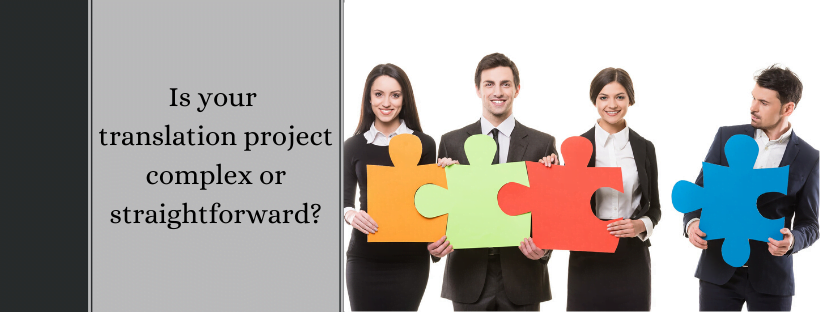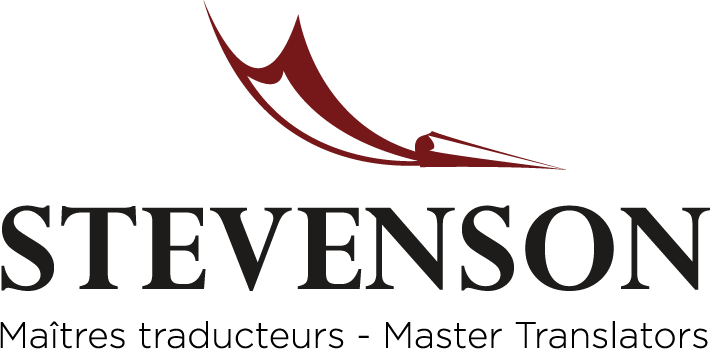
Is your translation project complex or straightforward?
In fact, whether your project is simple or complex does not affect Stevenson’s working process–we adhere to a rigorous methodology and have an incredible team with the experience to carry out mandates of any kind. At Stevenson, we eagerly await your texts and are up for any challenge.
In addition to official documents, we, at Stevenson—Master Translators, translate a wide variety of projects, each passing through our rigorous three-step process. Here is a non-comprehensive list of projects that we regularly translate.
Complex projects (in terms of format)
Scientific reports
Reports may range in length from dozens to hundreds of pages. A long text divided into chapters based on research and scientific data, featuring lead sentences, data graphics, images to simplify comprehension, with a table of contents for the entire work or for each chapter, and bibliographical references.
In these documents, we focus first and foremost on term consistency throughout the document. We share our research and create terminology records to have access to identical terms.
Data graphics and images are always translated with the context and constraints of the space in mind. Oftentimes, space is an issue, so we have to utilize several tricks to convey the intended meaning in the space we have to work with.
Bibliographical references are also subject to translation especially if the concept referred to in the text is extracted from a work that has been translated. In these cases, the correct page number, precise book title, and right term must be applied every time this concept is specifically referenced.
Tourist guides
Composed of a series of short texts intended to promote a region, activity, event, or location to attract a range of clients who speak a language other than that of the region visited. Descriptions, slogans, captions, legends, announcements, company names, indexes, address directories.
Annual reports
The distinctiveness of annual reports lies in the tone and style of writing. Often, they include a woven metaphor that must be adapted to the target language.
These documents also contain texts of a general nature such as biographies, descriptions of the company’s philanthropic activities, and technical sections with budget information and financial statements.
Online training
The online training courses that we translate are often intended for a well-informed public and transmit very specific knowledge. For these projects, our research skills are put to the test to accurately reflect the terms in the target language. Our translations of these training courses are presented on various platforms, such as PowerPoint, or Visio. They also often include modules of text and questions that participants have to answer. Notes are associated with these answers, and we translate texts for the wrong answers and the correct answers.
Training manuals
Training manuals are often complicated projects. They include theory, detailed explanations, graphics and images to provide specifics, exercises to ensure comprehension, multiple-choice questions, surveys, answer sheets, teaching manuals, and learning manuals.
Websites
Translating websites can be quite complex, especially when the client wants us to work directly on the site, which we do from time to time. Websites are generally composed of texts supported with images. The tone employed must really grab the reader’s attention and be consistent with the most recent terms in search engines.
Advertising campaigns
Even though advertising campaigns are usually not long, they are often complex due to puns, innuendos, rhymes, jokes supporting images, and words with double meanings where the equivalent in the other language does not necessarily have the same double meaning.
Trade books
Trade books resemble scientific reports in their complexity, but are generally written for an audience with an education level that is usually inferior to that of readers of scientific reports. The difference will be evident in the text written in the target language. For example, commonly used vocabulary will be preferred to scientific terms (e.g. hip replacement instead of hip arthroplasty). Uniformity in the terminology is also critical here.
Product monographs and descriptions
Projects of this nature demand a high level of rigour, especially in terminology research. Chemical compounds may demand even more research.
Museum exhibitions
Texts describing stuffed animals, specimens of all kinds, rocks, reptiles, leaves, and quizzes to facilitate and verify comprehension. Such projects are highly fascinating to translators since we learn all types of new things.
Relatively simple projects (in terms of format)
- Blogs
- Human resources manuals
- Press releases, internal communications and announcements
- Minutes, agendas, letters, and speeches
- Standards, guides, guidelines resulting from research
- Government agreements and private sector contracts
- Surveys


Leave a Reply